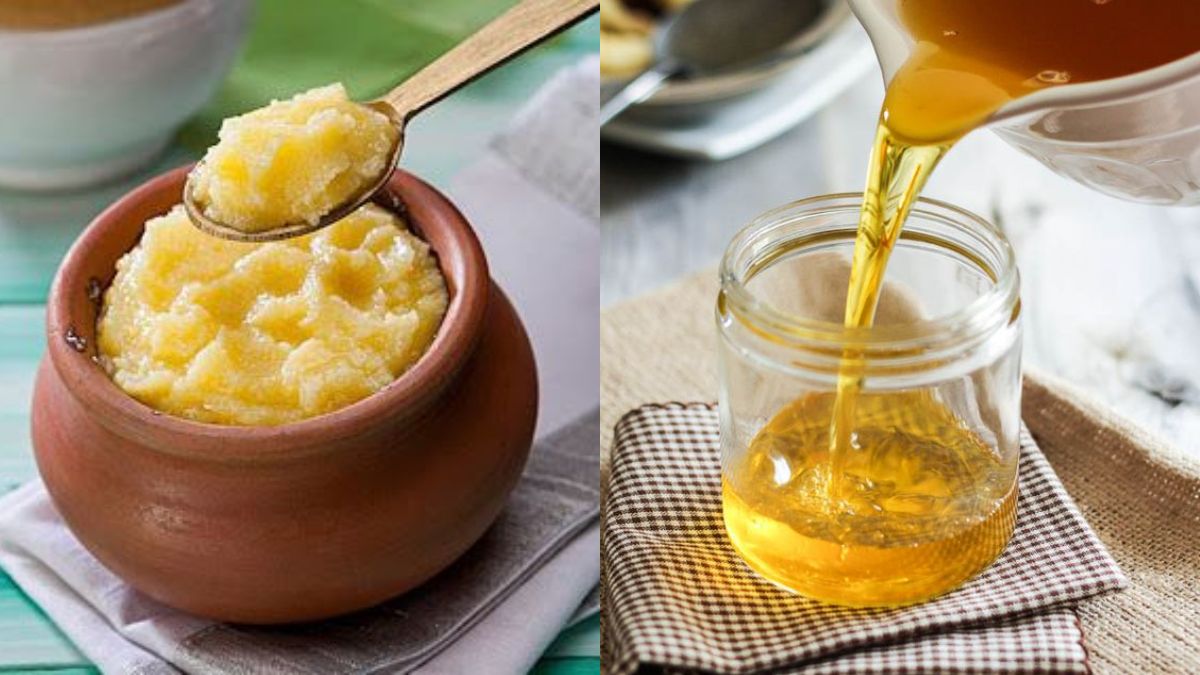Ghee, a beloved kitchen staple for generations, has long held a special place in our culinary hearts. Its versatility, from enhancing the flavours of rotis and parathas to infusing that aromatic tadka in our favourite dishes, makes it an indispensable ingredient. But what makes ghee truly remarkable are the myriad health benefits it offers.
Ghee stands out as one of the finest sources of fats, as recognized by health experts. It not only nourishes our bodies but also boosts our immunity and even contributes to a natural glow in our skin. However, the catch is that not all ghees are created equal when it comes to health benefits. In fact, commercially processed ghees often fall short of delivering the nutrient-rich goodness that traditional ghee offers.
Nutritionist Simrun Chopra sheds light on this distinction. She points out that many commercially available ghees lack the nutrients that are the hallmark of the real deal, with the ghee-making process being a key factor.
Types of Ghee: Bilona Ghee vs. Regular Ghee
In the market, you’ll find two primary types of ghee: bilona ghee and regular ghee. While both originate from milk’s malai, they follow different paths in their preparation. Regular ghee is crafted from the malai found in milk, whereas bilona ghee is derived from the malai formed during the process of setting dahi or yogurt.
Simrun Chopra provides valuable insight, stating, “The beneficial properties associated with ghee are primarily attributed to those made from yogurt malai. Ghees produced from milk malai lack the desirable qualities you might expect from ghee.” Bilona ghee, thanks to its low-heat preparation method, retains a higher concentration of vitamins and nutrients compared to regular ghee. This unique process also imparts a delightful nutty flavour and creamy texture to the final product.
Take a look:
View this post on Instagram
Moderation is Key: How Much Bilona Ghee Can You Consume?
Bilona ghee is indeed a treasure trove of antioxidants, healthy fats, and an array of enriching vitamins and minerals. Nevertheless, this doesn’t mean you can indulge in unlimited quantities. Nutritionist Simrun Chopra offers two compelling reasons for practising moderation:
1. Natural Oil Content: Most of the food we consume already contains natural oils. Adding excess ghee on top can result in an overload of fats.
2. Excessive Calories: Incorporating extra ghee increases the total fat content of a meal, which can lead to excess calorie intake in a day.
Instead of slathering ghee generously on your food, Simrun Chopra suggests using it for cooking. This approach helps maintain a balanced fat intake in your diet. She concludes, “Ideally, it’s best to avoid using both oil and ghee in a single meal.”
Now that you’re well-informed about the benefits of ghee and its healthier counterpart, bilona ghee, consider making your ghee at home following the correct procedure. By consuming it in moderation and as part of a balanced diet, you can savour all the goodness ghee has to offer.
Also Read: Introducing The Force Urbania 10, 13 & 17 Seater Vans













